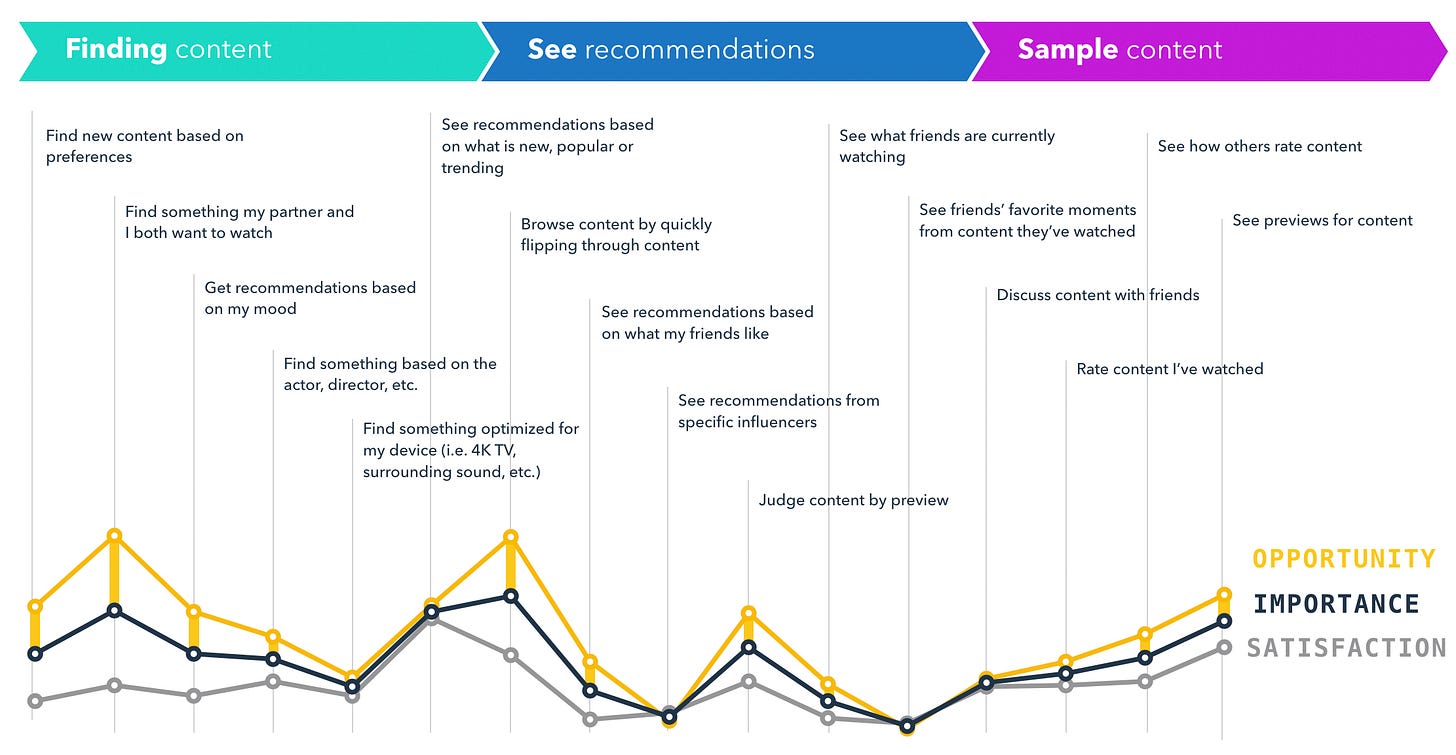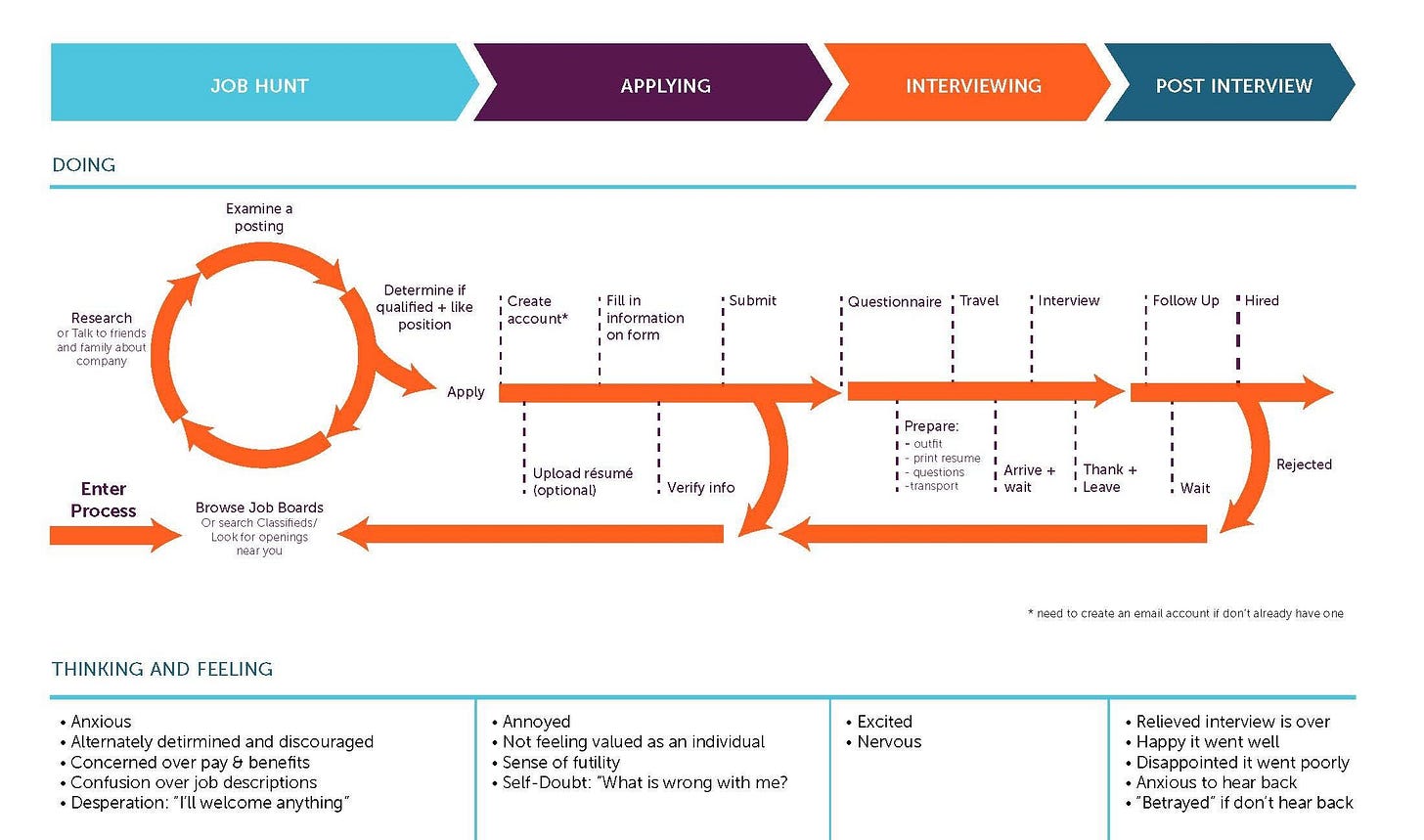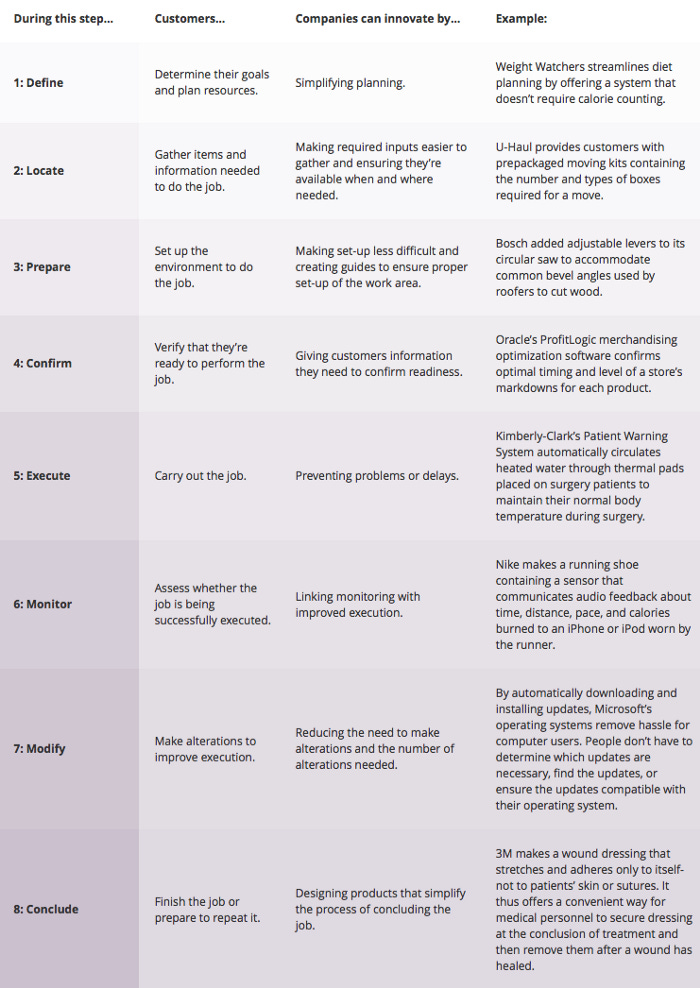One of the many things I love about the product management world is the frameworks!
Today I want to walk you through one of my favorites, a Jobs To Be Done (JTBD) map.
A job map is a single document that details the steps your customers go through to ‘hire’ a product for a ‘job’ they need to do. I think every business needs one job map per customer persona, per product.
By breaking down their process to find, complete, and review their job, we can improve our understanding of the customer – and optimize our product, marketing, and sales to better meet their needs.
In this post:
What is ‘jobs-to-be-done’?
Firstly, a recap. Jobs-to-be-done (JTBD) theory posits that people buy products and services to get a “job” done. Those jobs are mostly functional, however also have emotional and social components that also need to be fulfilled. Success comes from achieving the “job”, rather than gaining the tools to complete it.
You can read more about the JTBD methodology here, but watch Clayton Christensen in this primer:
Why use a job map?
Rather than user story maps, job maps don’t look at the individual actions that somebody takes in this journey, like clicks or searches, but instead look at the macro stages and micro-tasks that someone will do in their search to be successful.
Traditionally they have a lot of value in product management and can provide a foundation for the product discovery process. But I like to use them for two reasons: they’re really simple to communicate, and they base your product in the customers world, not yours.
I believe that everyone in a business, from backoffice teams to sales and marketing, should have knowledge of what your customers are trying to achieve. It’s logical that a culture that focuses on customer-first empathy will deliver maximum customer value.
Here’s a simple example of a Job Map.

The three blocks at the top detail the macro stages – I’ll come onto those in a second.
Underneath, you’ll also see the steps that the customer takes within each stage. For example, within the ‘Finding content’ stage the customer undertakes multiple steps. These steps are sometimes actions, but can also be decisions and considerations to be evaluated.
This map example also goes further to identify product opportunities. This works by surveying customers on the importance of each step, and how satisfied they are with their current ability to achieve it. By calculating Importance + (Importance – Satisfaction) to create an Opportunity score, we see where customers report their unmet needs, which could be opportunities for you to focus on.
JTBD map stages
To achieve the job, your customer will likely process through many or all of these stages.
![Customer Journey Mapping Tools: Win the Customer Experience [Template] | 280 Group Customer Journey Mapping Tools: Win the Customer Experience [Template] | 280 Group](https://cdn.substack.com/image/fetch/w_1456,c_limit,f_auto,q_auto:good,fl_progressive:steep/https%3A%2F%2Fbucketeer-e05bbc84-baa3-437e-9518-adb32be77984.s3.amazonaws.com%2Fpublic%2Fimages%2Fd467ff58-2405-482c-bdd8-513f471f8d04_1024x471.png)
It’s not as simple as just planning the job, doing the job, reviewing the job. There may be many more decisions, considerations, and inputs required to determine how the job should be done, what success looks like, or even if they’re ready to do it in the first place.
Again, many of these stages will take place, but maybe not all. You can simplify this by focusing just on the beginning, middle, and end of the job.
You can also dig deeper into your JTBD map by adding more levels. For example, each macro stage in your map may one or more jobs within it.
Linking JTBD stages to your product offering
In this table below, you can see how companies can improve their product offering by better meeting customer needs at each stage. This might be anything from offering simpler planning, to making set-up easier, or improving monitoring.
Communicating JTBD Maps
Job maps provide a single document that help everyone understand what a customer is trying to achieve and the stages they move through.
It’s a great basis for a really visual workflow explainer. Below is an example I’ve used before to show how visual it can be.

In the example, you’ll see:
- Macro stages along the job
- Activities at each stage
- Workflow elements to show the cycles and paths that take place in the process
They’ve also included what a customer is thinking and feeling at each stage. Again, this is great for bringing more empathy into your business. Detailing emotions your customer feels can also create more product opportunities for delight, as opposed to the cold, hard facts of the Opportunity/Importance/Satisfaction maths above.
Start your JTBD map journey
Realistically, you’re not likely to have user researchers available to spend time building this out. So let’s bring it back to basics.
To start building your JTBD map, ask a few people with domain or customer experience to put together their thoughts individually, before bringing together and talking it through.
Within a two hour workshop, you can have a good, solid draft of an initial JTBD map. From here, you’ll be able to measure your confidence at each stage – what do we have evidence for, and what may be based purely on assumptions?
With this information, you can go to customers and friendly people in the market to validate in casual conversations. You can iterate as you learn more.
An ideal scenario would be hiring a user researcher to carry out interviews, ethnographic research, and more to develop a JTBD map without organizational influence — helping develop a more pure understanding of your customers.
But for now, build your JTBD map, validate it, and socialize amongst your teams. Bring customer empathy into more conversations, and start identifying opportunities to better meet customer needs, delight customers, and optimize your business.





